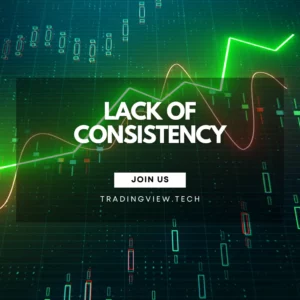Impatience is one of the most expensive habits a trader can have. At first glance, it may seem harmless—just entering a trade a bit early or taking a setup that almost meets your criteria. But over time, these seemingly small lapses compound into a pattern of inconsistency, missed profits, and mounting losses. Impatience pushes traders to act when the market isn’t offering anything worthwhile, which often results in chasing price action, buying tops, or selling bottoms.
For example, a trader might spot a breakout setup forming on a key resistance level. Instead of waiting for the candle to close above resistance with volume confirmation, they jump in halfway, anticipating the breakout. If the breakout fails (a common occurrence), they’re left in a losing position simply because they couldn’t wait for confirmation. In another case, a trader might open multiple positions in one session, hoping to catch every possible move. But without proper setups and planning, this leads to overtrading, emotional fatigue, and a string of small losses that erode capital and confidence.
Moreover, impulsive trading creates psychological stress. When you’re constantly reacting instead of following a plan, it becomes hard to measure what’s working and what isn’t. There’s no stable feedback loop, and without that, consistency goes out the window. Instead of learning from trades and improving, impatient traders keep repeating the same mistakes in different forms—often blaming the market instead of their lack of discipline.
Why Traders Struggle with Patience
Patience is difficult because it runs against the emotional grain of how most people approach fast-moving, uncertain environments like financial markets. The psychological triggers behind impatience are powerful. One of the biggest culprits is FOMO (Fear of Missing Out). When traders see a market moving without them, especially after a setup they almost took, there’s an overwhelming urge to jump in late just to be part of the action. Ironically, these rushed entries often happen right before the trend reverses or momentum dies out.
Another reason is overconfidence, especially after a few successful trades. A trader might start feeling invincible, believing they can “read” the market without needing confirmation. This leads to forcing trades and abandoning their rules because they trust their gut over their strategy. Eventually, this behavior gets punished by the market, but the psychological damage is done: the trader now battles between hesitation and reckless entries, never finding the right balance.
Then there’s the urge to always be doing something. Trading platforms are addictive—charts move, notifications pop, trades flash green and red. It’s easy to mistake activity for productivity. But just because the market is open doesn’t mean it’s offering quality opportunities. This mindset creates unnecessary pressure to enter trades just to feel “in the game,” which feeds into a cycle of emotional decisions and poor outcomes.
At its core, the struggle with patience is a mindset issue. Many traders equate sitting on their hands with being lazy or unproductive, when in reality, not taking a bad trade is just as valuable—if not more—than taking a good one. The ability to wait, observe, and act only when the odds are in your favor is a skill that separates consistent traders from those who constantly chase the market and lose.
Setting Clear Trading Criteria
A trader without clearly defined trading criteria is like a pilot flying blind. In the chaos of real-time price movement, without fixed rules, it’s incredibly easy to justify a bad trade. That’s why having a well-structured trading plan—complete with precise entry and exit rules—is not optional; it’s essential.
Clear criteria create structure, and structure breeds discipline. Instead of reacting emotionally or relying on gut feelings, you rely on a predefined system that filters out noise and low-probability setups. For example, a trader might define an entry rule such as: “Enter long only when the 20 EMA crosses above the 50 EMA on the 1-hour chart, and price breaks above resistance with volume above the 10-period average.” This is specific. It sets boundaries for what qualifies as a trade-worthy setup, and anything that doesn’t meet those conditions is automatically dismissed.
Having such filters eliminates a massive portion of poor trades. Impatient traders often get pulled into subpar opportunities because they haven’t defined what good looks like. The market is full of movement—up, down, sideways—and if your criteria are vague, everything starts to look like a setup. That’s how people end up trading noise and volatility instead of structure and trend.
An effective trading plan also defines exit rules: profit targets, stop losses, and conditions for exiting manually. This prevents the all-too-common mistake of holding onto a losing trade, hoping it’ll turn around, or closing a winning trade too early out of fear. When exit rules are clear, traders are less likely to let emotions take over mid-trade.
Using a checklist before entering a trade is one of the most practical tools for reinforcing these criteria. The checklist might include questions like:
- Is the trend direction clear?
- Is there confluence with support/resistance or Fibonacci levels?
- Has volume increased with the move?
- Are all indicators aligned?
If even one answer is “no,” that’s a red flag. Checklists don’t just promote better decision-making; they slow you down. They create a natural pause between idea and execution—a moment to reflect and reassess, which is critical for avoiding impulsive trades.
In short, clear trading criteria help you act with purpose. They keep your finger off the trigger unless everything lines up. And most importantly, they train you to say no to mediocrity and yes only to setups that have a statistical edge.
The Power of Waiting for Confirmation
In trading, waiting for confirmation is the difference between guessing and making calculated decisions. It’s the moment where a potential setup proves itself with evidence—through price action, volume, candlestick patterns, or indicator signals. While impatient traders jump in at the first sign of movement, experienced traders know that most market moves are false alarms until confirmed.
Let’s say you spot a bullish pattern forming—a flag or an ascending triangle. It’s tempting to enter early, assuming the breakout will happen. But seasoned traders know that early entries often lead to traps: fake breakouts, stop runs, or immediate reversals. By waiting for confirmation, such as a strong candle close above resistance with increased volume, you significantly increase the probability of catching a genuine move.
Confirmation isn’t just about one signal. It’s often about multiple pieces of evidence lining up: a price breaking a key level, volume expanding, and an indicator like RSI or MACD supporting the momentum. This confluence creates a stronger case for the trade and adds a layer of objectivity to your decision-making.
Patience here pays off in two ways. First, it reduces the number of losing trades by filtering out weak setups. Second, it boosts confidence. When a trade checks all the boxes and confirms, you’re not hoping—it becomes a strategic decision backed by logic and data. This makes it easier to hold through minor pullbacks and follow your plan without second-guessing yourself.
More importantly, waiting for confirmation protects your capital. Avoiding premature entries means avoiding unnecessary losses. Think of all the times you were stopped out just before the market moved in your intended direction. That pain often stems from acting too soon. Waiting helps you stay out of the chop and participate only when the market has declared its intention.
It’s also a mental game. Watching a trade play out without you in it can be frustrating. But over time, the discipline to wait builds emotional resilience. You stop measuring success by how often you trade and start measuring it by how well you trade. In the long run, one high-quality, confirmed trade will always outperform five rushed entries.
Practical Techniques to Stay Patient
Patience isn’t just a trait—it’s a skill, and like any skill, it can be trained and strengthened with deliberate action. Many traders understand the need to be patient but struggle to implement it consistently, especially in a fast-paced environment where opportunities seem to flash by every minute. Here are several practical techniques to help develop and maintain patience in trading.
1. Set Alerts Instead of Staring at Charts
One of the simplest and most effective tools is the price alert. Instead of watching the market tick by tick, set alerts at key levels where your trade setups begin to take shape. This removes the temptation to enter prematurely and reduces mental fatigue. You don’t need to catch every move—you need to catch the right one. Alerts help you wait without losing focus.
2. Reduce Screen Time
Constantly watching charts can create a false sense of urgency. The more you stare at price movement, the more likely you are to see patterns that don’t exist and convince yourself to take low-quality trades. Limit your chart-watching to designated times—perhaps when a new candle forms on your trading timeframe or during high-volume sessions. Trade less, observe smarter.
3. Journal Your Trades
A trading journal is not just a performance tracker; it’s a psychological tool. When you record not just what you traded, but why you entered and how patient (or impatient) you were, patterns start to emerge. You’ll see how often jumping in early led to losses, or how waiting paid off. This reflective habit creates accountability and reinforces discipline over time.
4. Backtest and Build Confidence in Your Strategy
Impatience often comes from doubt. If you don’t fully trust your system, you’re more likely to second-guess it or act on impulse. Backtesting helps fix that. By seeing how your setups perform over hundreds of trades, you build statistical confidence in your edge. This reduces the urge to “make something happen” when nothing is there because you know opportunities will come.
5. Create a Daily Routine That Reinforces Calm and Focus
Your mindset before you even sit down at the charts affects your trading decisions. Start your trading day with structure: review your plan, scan for high-probability setups, and check news that might affect your instruments. Consider mindfulness exercises like breathing techniques or meditation—just 5–10 minutes can reduce anxiety and bring clarity. Trading from a calm state leads to better decisions and more patience.
In short, staying patient isn’t about sitting on your hands—it’s about filling your time with actions that reinforce discipline and filter distractions. Create a system that removes emotional pressure and replaces it with clarity and routine.
Tracking Progress and Adjusting Mindset
Developing patience isn’t a one-time fix—it’s a continuous process that requires self-awareness and deliberate mindset shifts. One of the most powerful ways to improve is by actively tracking your progress and learning from your own behavior, not just your results.
Start by reviewing your trades regularly—but don’t just look at wins and losses. Focus specifically on why you entered each trade. Were you patient? Did the setup meet all your criteria? Did you wait for confirmation or jump the gun? Highlight trades where patience paid off and trades where impatience led to problems. Over time, this comparison creates a strong internal feedback loop. You start to see that patience doesn’t just “feel right”—it delivers better outcomes.
Track missed trades too. Sometimes you’ll wait and the setup doesn’t materialize—that’s fine. The goal isn’t to catch everything, it’s to catch what fits your edge. Logging these “non-trades” reminds you that not trading is also a valid and smart decision. It reinforces the idea that your value as a trader doesn’t come from activity, but from precision.
Adjusting your mindset means redefining what success looks like. Many traders equate success with being active—placing more trades, catching more moves. But experienced, consistent traders know that success is about selectivity. The goal is not to trade often—it’s to trade well. Fewer, high-quality trades often outperform a flurry of mediocre ones. Shift your focus from quantity to quality.
Also, remind yourself that trading is a long game. One bad trade won’t ruin your career, just as one good trade won’t make it. Patience allows you to play the probabilities over time, which is the only way to grow sustainably. When you start thinking in terms of weeks, months, and years—instead of hours and minutes—your approach naturally becomes more measured and disciplined.
Finally, celebrate the small wins. Not just profitable trades, but the moments where you stuck to your rules, waited instead of rushed, or passed on a risky setup. These are signs of real growth. Patience isn’t passive—it’s strategic, and mastering it is one of the clearest paths to long-term trading success.



